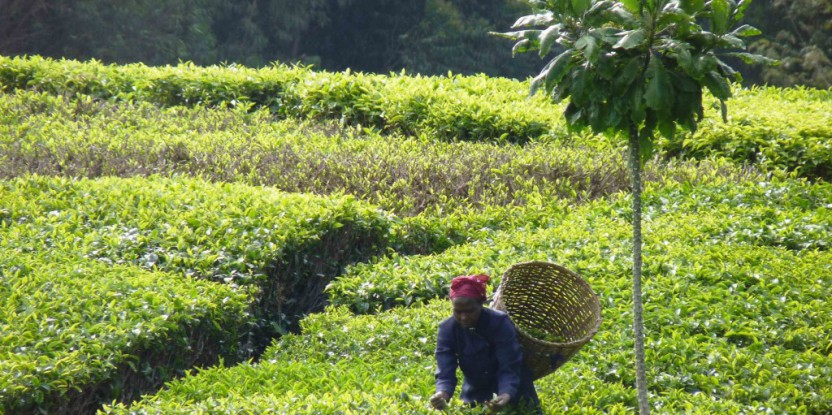
I am often asked if forests will benefit from a landscape approach. Sometimes I hear concerns that taking a landscape approach could lead to more forest losses—not less—as other land-use priorities, such as agricultural intensification, kick in. In other words, can the landscape approach be a threat to forests?
To begin with, I argue that it is the values of forests (and forestry) that count, not the expanse or existence of forests as such. That is, we should focus on ensuring the continuation and enhancement of the many benefits that forests and forestry offer humanity in aspiring to a sustainable and equitable future. The question then becomes whether the landscape approach can help in enhancing and supporting these benefits of forests and forestry.
Promoting the values of forests and forestry is obviously a “good” thing. However, the questions raised in relation to the landscape approach also demonstrate the persistence of the view that forests and other land uses compete, rather than complement each other. That is, the dichotomy between, e.g., forest (institutions) and agriculture (institutions) remains more prominent than the search for integrated solutions. I think that we must seek integrated solutions if we are to appropriately conserve and enhance the values of forests and forestry.
First, let us take a perspective from within forestry institutions and look outward. The recent New York Declaration on Forests is a good example, as it expresses ambitions by national and subnational governments, civil society and the private corporate sector. Eight of the 10 commitments are about reducing deforestation and/or greenhouse gas emissions from forests. Since deforestation is closely tied to expansion of other land uses, particularly agriculture, it appears necessary to work together with these sectors to achieve the commitments. Further, the commitments highlight agricultural commodities, “subsistence farming,” rights to land and resources, and the promotion of sustainable and equitable development. Again, it appears that delivery on the forest commitments will depend on working across sectors and with a broad development perspective.
Secondly, let us look at the forest from the outside using the Agriculture Action Statement from the same UN Climate Summit in September. The focus here is on Climate-smart Agriculture, a concept that includes forestry and fisheries, as well as the crucial role that ecosystems play in productivity and the resilience of rural livelihoods and food production. The statement highlights the need to reduce emissions from agriculture, including those that are caused by impacts on ecosystems. Again, these commitments cannot be achieved without considering and safeguarding the value of forests and forestry for the overall food system.
So regardless of whether we take an “inside” or “outside” perspective, forests and forestry are pivotal to achieving commitments toward a sustainable future. This is reassuring, and supports the landscape approach idea. It is likely that we will negotiate overall better solutions if sectors and stakeholders work together—which is also a starting point for the Global Landscapes Forum.
We should be clear, however, that there is no guarantee that the landscapes approach will always lead to an increase in the values of forests and forestry (or in the appreciation of these values). These values form a subset of overall aspirations within a landscape, and it may be that stakeholders in a particular landscape prefer alternative scenarios and prioritize other outcomes—choosing not to maximize forest values.
I am convinced that informed and fair choices are always better than isolated actions, and that those choices will almost always enhance forest values, not destroy them
Is this a problem? Not really. It would be a problem if negotiations suffer from power imbalances or illegal behaviors—but this should not be held against the landscape approach as such. Recent reporting on violence against local stakeholders is a stark reminder that basic conditions for a landscapes approach for setting priorities are often simply not there. Obviously, application of human rights and appropriate rule of law are prerequisites.
It could also be a problem if the consequences of forest losses are not well-understood or taken into account. However, if they are, then the results from an informed, open and inclusive process that consider forest/forestry values appropriately should be accepted, even in those cases where it may lead to less forest.
There seems to be much more to lose if we don’t seek integrated solutions across sectors. Sector-specific policies sometimes contradict each other and simultaneously promote, for example, agricultural expansion and the protection of forests without considering the effects of conflicting subsidies. Further, the lack of coordination between sectors’ interests seems to be behind some of the destructive expansion of commercial agriculture, such as oil palm plantations into peatland forests.
So will forests benefit from the landscape approach? You can’t be sure in all cases, but I am convinced that informed and fair choices are always better than isolated actions, and that those choices will almost always enhance forest values, not destroy them. As the evidence base is growing, I expect that we can, in the near future, confirm or reject this claim through scientific results.
And finally, it may be appropriate to flip the question: Is it appropriate to argue for forest conservation in isolation without taking into consideration the wider needs and aspirations of people?
We want you to share Forests News content, which is licensed under Creative Commons Attribution-NonCommercial-ShareAlike 4.0 International (CC BY-NC-SA 4.0). This means you are free to redistribute our material for non-commercial purposes. All we ask is that you give Forests News appropriate credit and link to the original Forests News content, indicate if changes were made, and distribute your contributions under the same Creative Commons license. You must notify Forests News if you repost, reprint or reuse our materials by contacting forestsnews@cifor-icraf.org.
